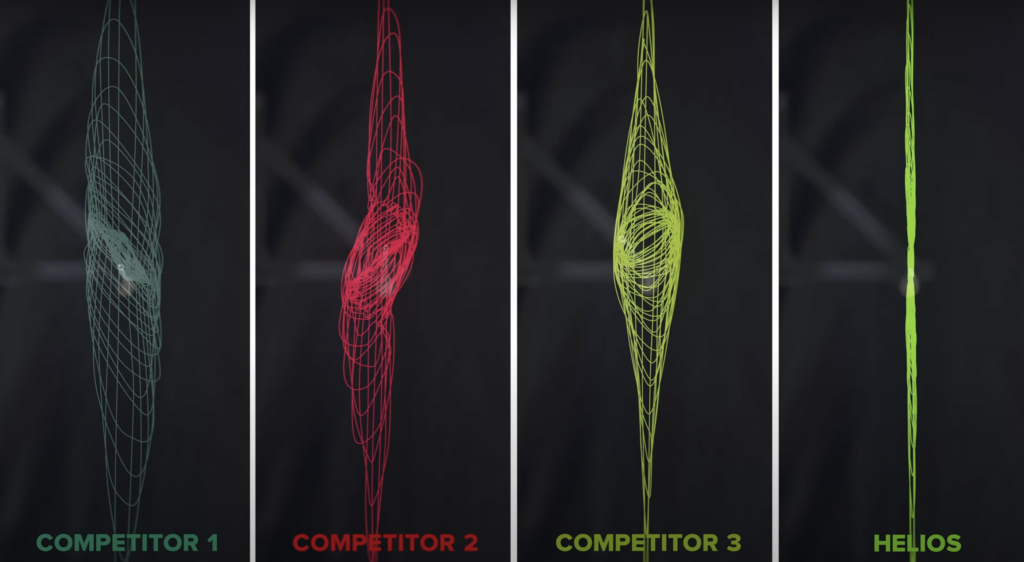
In fairness, before I go on, I should reveal that I have yet to cast the rods in this new lineup. What?!? So what am I doing reviewing them? Well, I’m not reviewing the performance of these particular rods so much as leveraging them to have a discussion about the value of fly rod quality and technology, how it may or may not benefit the average angler, and how to approach putting those things into the proper context. If that discussion sounds intriguing, read on. On the other hand, if you’re looking for someone to break down the details or wax poetic about how mind-blowing these new sticks are (and I have no doubt that in the hands of a competent caster, they are), keep searching.
Still here? Then, let’s get to it. The specs certainly seem to indicate that the design philosophy is focused on improving the right characteristics, and the measurables certainly add up to enhanced rod performance. Hey, with a price tag of over a thousand bucks, it should practically make the cast for you…which marketing stops just short of claiming it will. One of the major claims are that these rods are 4 TIMES MORE ACCURATE than before. This is accomplished with various attributes that lead to greater tracking stability. But let’s unpack that. You would imagine that a more accurate fly rod will lead to your casts being just that, more accurate. Sounds plausible.
But the hard truth is that no matter what any manufacturer’s marketing might lead you to believe, fly rods don’t cast themselves. Anglers do. And on the water these days, I see a lot of thousand-dollar fly rods subjected to fifty-dollar casts. How does this relate to accuracy claims, you ask? To answer that question, you’ll need to dip your toe into the rabbit hole with me for a moment. First let’s agree that a loop of fly line, the vehicle that delivers your fly, is formed exclusively by the path of your rod tip during the cast. And the goal should be for that path to be a straight line. It’s also a fact that the rod tip has no choice but to move in the manner that you dictate with your casting stroke. Plainly put, if you are unable to execute the casting stroke necessary to properly form and manipulate that loop of fly line, not only will a precision rod NOT make you more ACCURATE, it’s likely to make you more precisely INACCURATE.
Let me be clear, my goal here is not to disparage these rods, nor is it to question the claims Orvis is making. I have no doubt they are stellar. Like many other of today’s top brands, advances in design and technology have allowed them to meaningfully hone rod blank performance. As I’ve written before, there is no disputing the fact that advances in rod design and build technology have given us access to some killer tools. And this new rod from Orvis is likely no exception. But along the way, casting skill has been pushed ever further into a dark corner. And without a properly executed cast, I would argue that the benefits baked into these beautiful feats of engineering remain largely if not completely inaccessible to the fly angler.
That’s likely not what you want to hear. And, without reading on, it might sound like something rod manufacturers prefer I not say. But I’m not here to coddle you, I’m here to support you. I’m a certified casting instructor working with fly anglers of all levels who is passionate about sharing solid skills, busting myths, and shining a light on the truth about casting skill. And as far as the rod makers go, I really believe in the idea that a rising tide lifts all boats. I believe to my toes that if the greater fly angling community would come to realize the value of investing in the most important variable in the sport (themselves), these advanced tools would become even more broadly lauded and valued.

But before I get too carried away with my evangelism (I know, too late), let’s circle back to the original question. Is the new Orvis Helios 4x better than the Helios 3? My short answer is that I don’t really care. We are literally splitting hairs when it comes to rod design and manufacturing/materials technology at this point. I’m frankly less interested in better rods than I am in better casting. I said earlier than I’ve seen a lot of $1000 rods subjected to $100 casts. Conversely, a skilled caster can make a $100 rod perform like a million bucks.
So now what? Trust me when I say that you will never regret making the investment in yourself and your skill. I promise you that if you find a competent instructor and do the work to improve by even 50%, it will pay bigger dividends on the water than buying a rod that is 400% better than the one you already have. It will also be a hell of a lot less expensive. And hey, if you want to celebrate your new level of skill by walking proudly into your local fly shop and dropping a stack on any one of the best rods the industry has to offer, go for it!


Years ago when I was learning to flycast, Lefty Kreh stated that it was not the equipment but operator skill that mattered most. He proceeded to back up his claim by making beautiful casts with just his arm – no rod.
Maybe if I was a tournament level caster a Helios flyrod would be worth it to me, but I am not in that league. I won’t be getting a Helios (or other premium rod for that matter).
That was a terrific article and I am one of those anglers who always needs guidance on my casting. While my casts are, in my opinion, above the $100 level I still need guidance and practice to improve my existing abilities. Therefore, for the time being, I will leave the Helios 4 in the rack at the fly shop.
Well said.